Mount Perry, formerly a copper mining and smelting town, is 80 km south-west of
Bundaberg. The mountain is the southern-most peak in the Hogback Range, five km east of the town.
The mountain was probably observed by the colonial surveyor, James Burnett, in 1847 and named after the Deputy Surveyor-General, Samuel Perry.
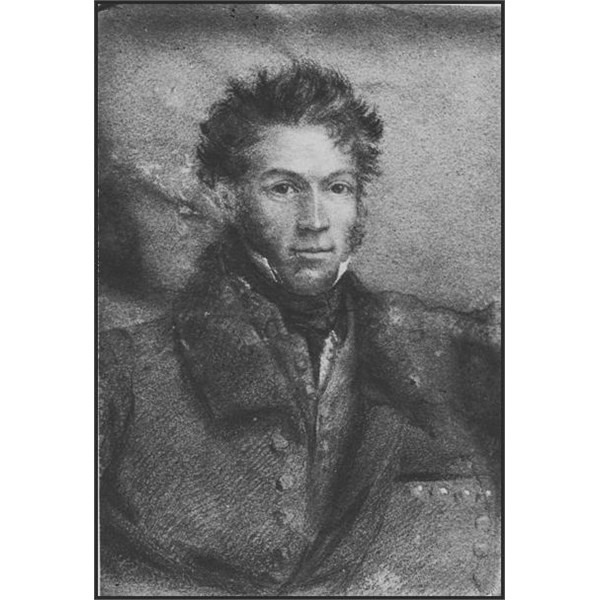
Capt. Samuel Perry, Deputy Surveyor General
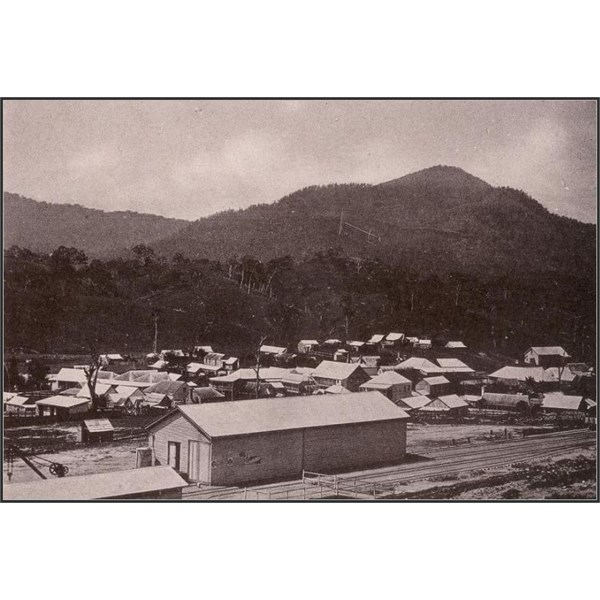
Mount Perry, unknown date
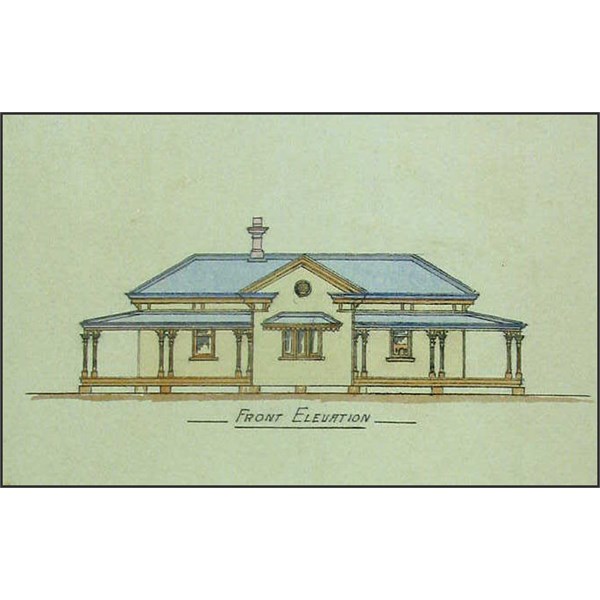
Mount Perry Post and Telegraph Office Front Elevation 1886
In 1851 the
Mount Perry pastoral run was taken up by its first proprietor, Robert Wilkins.
In 1862, Henry Dingle reputedly noted evidence of copper ore. In 1869 Dingle came upon evidence of rich ore and with a better understanding of the profit from minerals precipitated a rush of prospectors. Within a year a
Sydney entrepreneur, Ebenezer Vickery, invested in six shafts and four tunnels, and by the end of 1871 had taken out 1500 tons of ore. Several other companies and individual prospectors worked their own mines. Among the holders of mineral selections were the partnership of G.R. Fife, A. Heusmann and J.W. Barnett who, taking advantage of the fast growth of
population, subdivided their holding for building sites. It evolved as the town of Fife-Barnett. By mid-1871 it was reported that there were five hotels erected or in the course of being built, a blacksmith and several stores. A newspaper, the
Mount Perry Mail, began publication in 1872.

The old original Grand Hotel at Mt Perry
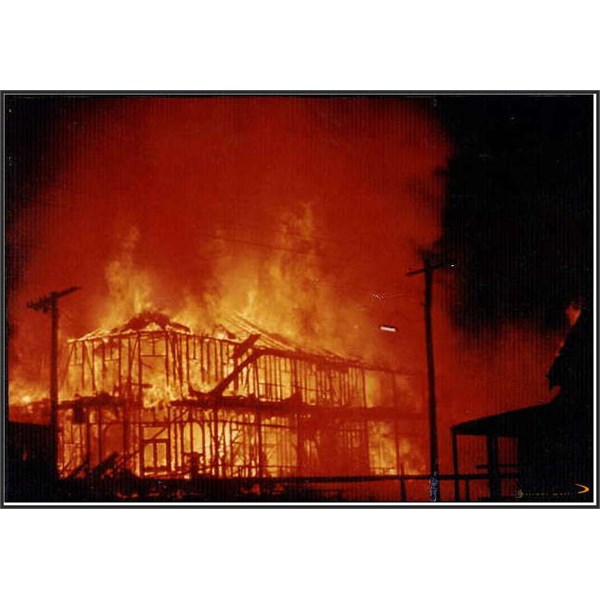
The Grand Hotel on fire
A provisional school was opened in 1871 and, after considerable local agitation, replaced by a National School in 1874 with an enrolment of 150 children. Wesleyan Methodism and Cornish miners started church
services in 1872, and both Catholics and Methodists built churches within the year. Overlooking the town's numerous buildings were the smelters.
The town's prosperity ebbed and flowed with world copper prices. The smelters were closed in 1877 and reopened in 1884, coinciding with the completion of the railway to
Bundaberg.
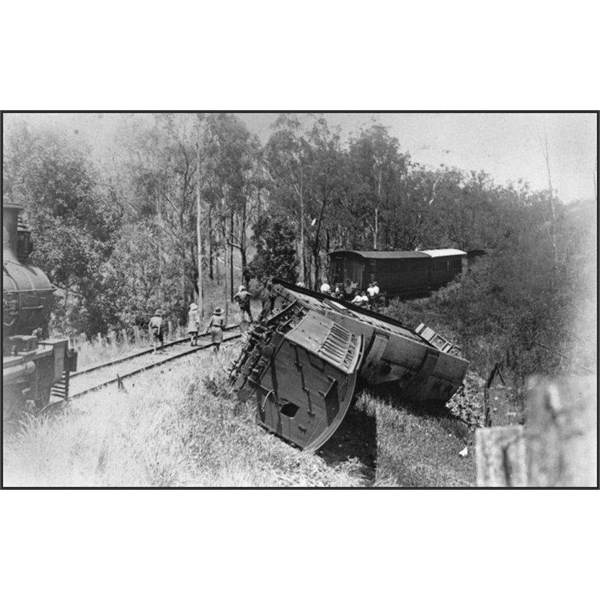
Railway carriages derailed at Gillen Siding on the Mount Perry branch line, 1924
By then, the Perry local government division had been created. The council met in a variety of venues - auction room, Oddfellows hall and court house - and a shire office and meeting rooms were built in 1959. There had been a plethora of friendly societies and kindred groups by the time of the town's second boom period that began in the early 1900s, and the Masonic Temple dates from that time. It is a symmetrical timber structure with Tuscan columns and a wide pediment, and is on the Australian
heritage register.
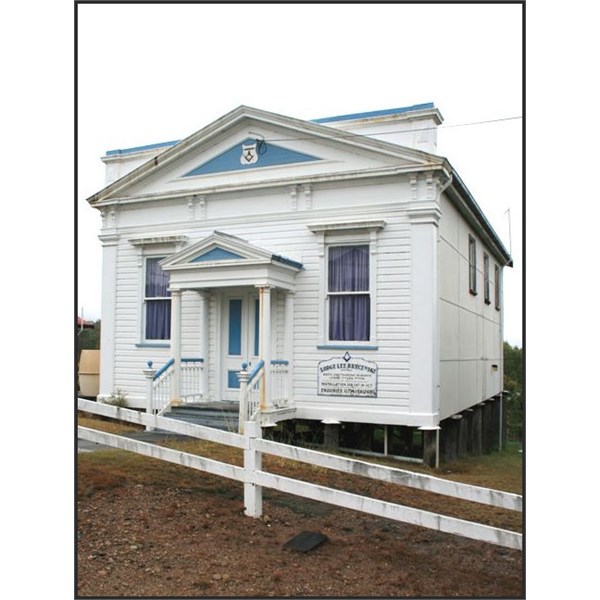
Mount Perry Masonic Lodge
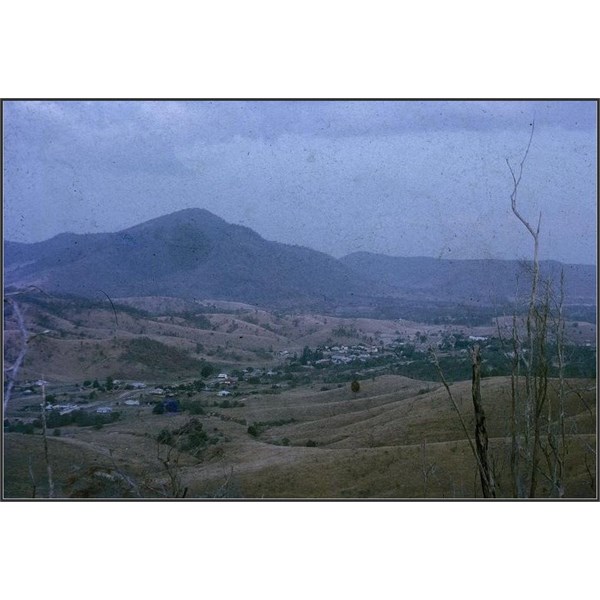
Mt Perry 1963
The smelters closed in 1915, and
Mount Perry adjusted to becoming a pastoral town. The railway connection ended in 1960 and the court house was converted to a public hall the following year. The hospital had been without a resident doctor since the mid-1940s and was designated a cottage hospital in the 1970s.
The
Boolboonda Tunnel is an abandoned
heritage-listed railway tunnel near
Mount Perry in Queensland, Australia. The tunnel is 192 m in length making it the longest unsupported man-made tunnel in Queensland.Its construction represented an important engineering feat for rail transport in Queensland.
The tunnel was constructed for the
Bundaberg to
Mount Perry railway line that was built in the 1880s.

The Boolboonda Tunnel is off the main road about 9 Kms from Mount Perry.
It passes under the Boolboonda Range through hard
granite rock. It took two years to dig and was officially opened on 2 November 1883. The line was deviated in 1960 and tracks removed the following year.
Today the tunnel is accessible by vehicular traffic. It is maintained by the
Bundaberg Regional Council and is now home to a colony of little bent-wing bats